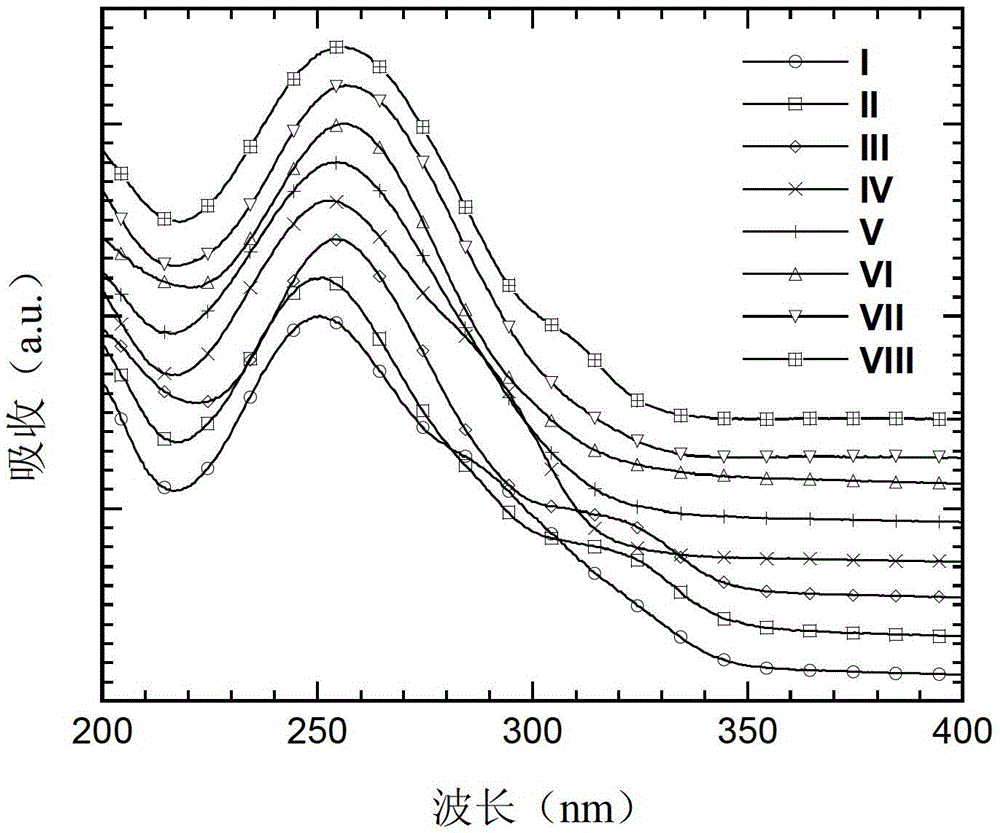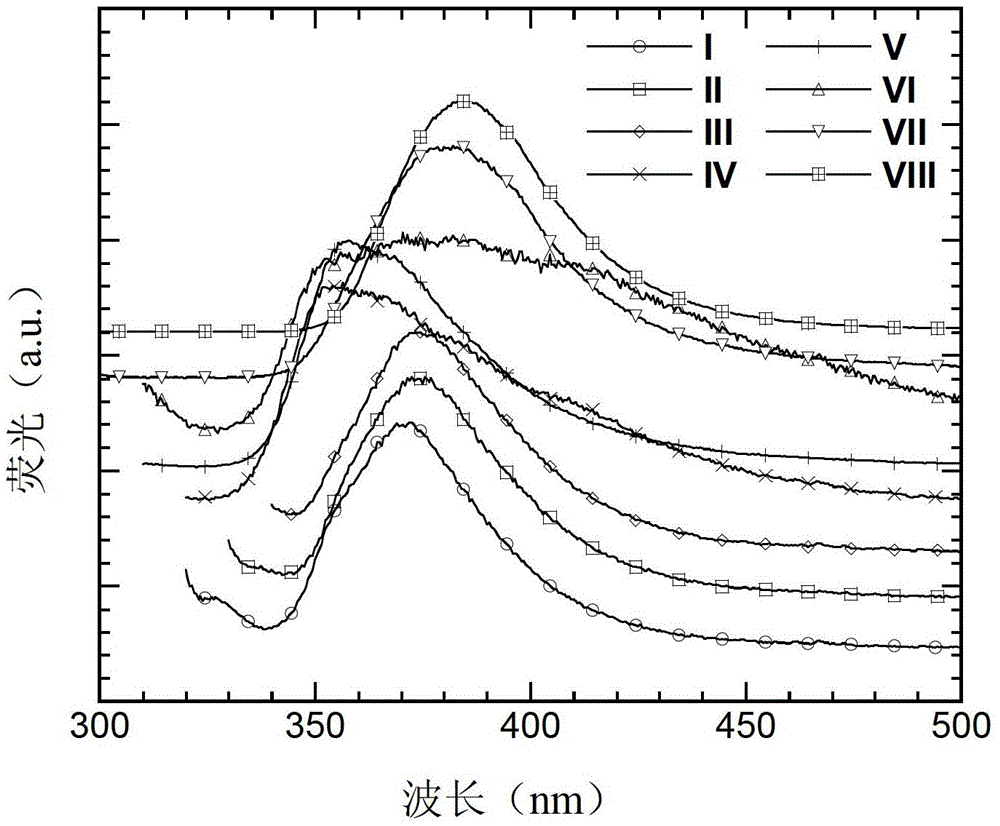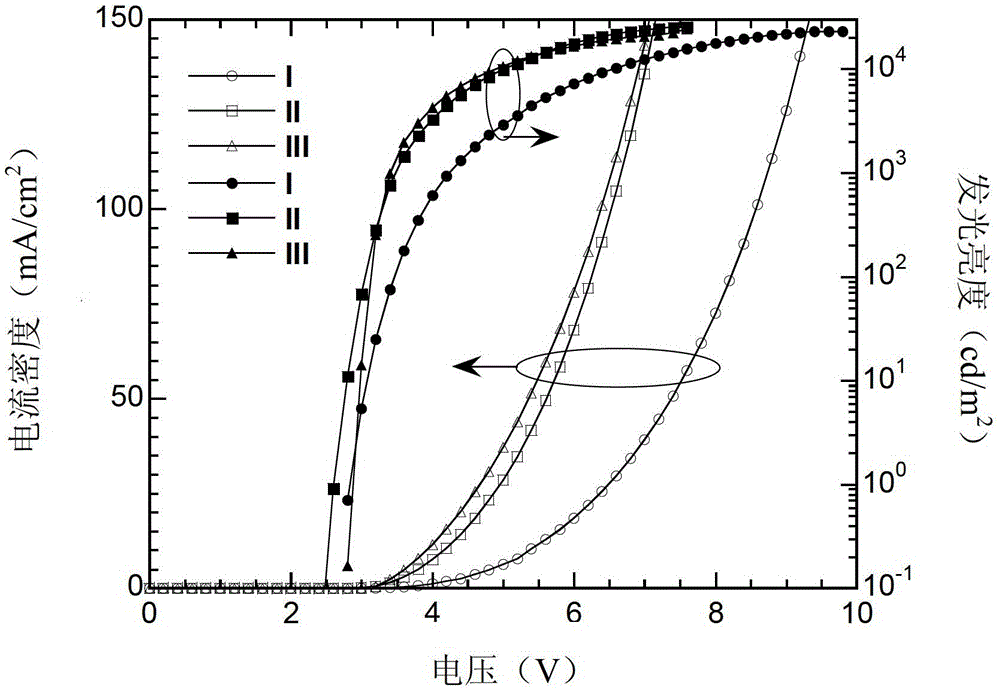A kind of compound with tripyridylbenzene as core and its preparation method and application
A technology of tripyridylbenzene and halogenated tripyridylbenzene, which is applied in the field of compounds with tripyridylbenzene as the core and its preparation, can solve the problems of complex device structure, increase of injection barriers, and increase of device driving voltage, and achieve The device structure is simple, the electron injection barrier is low, and the effect of reducing the driving voltage
- Summary
- Abstract
- Description
- Claims
- Application Information
AI Technical Summary
Problems solved by technology
Method used
Image
Examples
Embodiment 1
[0056] Embodiment 1: The preparation of the compound taking tripyridylbenzene as nucleus
[0057] (1) Preparation of pyridylbromobenzene: Add 1,3-dibromobenzene (24.8g, 105mmol, Aldrich), 2-pyridylzinc bromide (0.5MinTHF, 140mL, 70mmol, Aldrich), tetrakis(triphenylphosphine)palladium (2.43g, 2.1mmol, TCI) and anhydrous tetrahydrofuran (30ml), stirred and reacted at 75°C for 24h. After the reaction was naturally cooled, the reaction solution was extracted with ethyl acetate, washed three times with saturated brine, and the obtained organic layer was dried over anhydrous magnesium sulfate. Filter with suction, and remove the solvent in the resulting filtrate under reduced pressure. Separation with a chromatographic column, the mobile phase used is n-hexane / ethyl acetate=8:1. After spin-dried, vacuum-dried to obtain 10.3 g of a colorless oily product, 3-(2-pyridyl)bromobenzene, with a yield of 63%.
[0058] 1 HNMR (270MHz, CDCl 3 ):δ(ppm)8.83(d,J=2.3Hz,1H),8.63(dd,J=4.8and1....
Embodiment 2
[0070] Embodiment 2: The preparation of the compound taking tripyridylbenzene as nucleus
[0071] (1) Preparation of pyridylchlorobenzene: Add 3-bromopyridine (4.84g, 30.6mmol, Aldrich), 3-chlorophenylboronic acid (4.95g, 31.6mmol, Aldrich) into a 250ml three-necked flask under nitrogen atmosphere, Tetrakis(triphenylphosphine)palladium (0.70g, 0.61mmol, TCI), 2M potassium carbonate aqueous solution (90ml), toluene (150ml) and ethanol (50ml), stirred and reacted at 85°C for 24h. After the reaction was naturally cooled, the reaction solution was extracted with toluene, washed three times with saturated brine, and the obtained organic layer was dried over anhydrous magnesium sulfate. Filter with suction, and remove the solvent in the resulting filtrate under reduced pressure. Separation with a chromatographic column, the mobile phase used is n-hexane / ethyl acetate=3:1. After spin-dried, vacuum-dried to obtain 5.3 g of a colorless oily product, 3-(3-pyridyl)chlorobenzene, with a...
Embodiment 3
[0081] Embodiment 3: The preparation of the compound taking tripyridylbenzene as nucleus
[0082] (1) Preparation of pyridylbromobenzene: Add 4-pyridine borate (18.1g, 88.4mmol, Aldrich), 3-iodo-1-bromobenzene (25g, 88.4mmol) into a 250ml three-necked flask under nitrogen atmosphere , Aldrich), tetrakis(triphenylphosphine)palladium (2.04g, 1.77mmol, TCI), 2M potassium carbonate aqueous solution (100ml), toluene (150ml) and ethanol (50ml), stirred and reacted at 85°C for 24h. After the reaction was naturally cooled, the reaction solution was extracted with toluene, washed three times with saturated brine, and the obtained organic layer was dried over anhydrous magnesium sulfate. Filter with suction, and remove the solvent in the resulting filtrate under reduced pressure. Separation with a chromatographic column, the mobile phase used is n-hexane / ethyl acetate=3:1. After being spin-dried, vacuum-dried to obtain 11.1 g of a colorless oily product, 3-(4-pyridyl)bromobenzene, wit...
PUM
 Login to View More
Login to View More Abstract
Description
Claims
Application Information
 Login to View More
Login to View More - R&D
- Intellectual Property
- Life Sciences
- Materials
- Tech Scout
- Unparalleled Data Quality
- Higher Quality Content
- 60% Fewer Hallucinations
Browse by: Latest US Patents, China's latest patents, Technical Efficacy Thesaurus, Application Domain, Technology Topic, Popular Technical Reports.
© 2025 PatSnap. All rights reserved.Legal|Privacy policy|Modern Slavery Act Transparency Statement|Sitemap|About US| Contact US: help@patsnap.com



